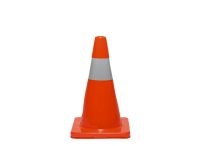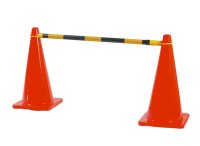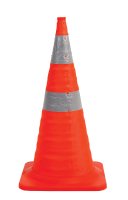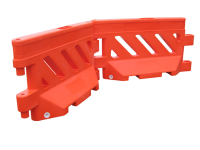SITE SAFETY
Esko’s range of traffic cones are made from high quality UV-resistant PVC, flexible, with high impact resistance.
They have excellent thermal performance, will not crack in low temperatures or collapse in high temperatures. Esko cones are tested to pass the ASTM G154-12A UV resistance test and exhibit good performance in fading and ageing tests.
Esko road cones are strong, durable and will spring back from most accidental strikes.
They have excellent thermal performance, will not crack in low temperatures or collapse in high temperatures. Esko cones are tested to pass the ASTM G154-12A UV resistance test and exhibit good performance in fading and ageing tests.
Esko road cones are strong, durable and will spring back from most accidental strikes.
Traffic cones can be used in many ways to:
• Designate traffic lanes
• Provide warning of possible road obstructions ahead
• Mark off restricted areas and establish boundaries
• Support cone bars to channel pedestrian traffic
• Support signage
What Kind of Cones Can Be Used for Traffic Management?
In New Zealand the selection, application and compliance of any temporary traffic control devices is specified very precisely by NZTA’s ‘Code of Practice for Temporary Traffic Management (CoPTTM)’. This extensive set of regulations should be well understood by anyone responsible for traffic management in roading works.
NZTA only permit the use of 900mm reflective cones on any New Zealand road, except in the case of temporary cones used to protect roadmaking paint, when 450mm cones may be used.
CoPTTM compliant highway cones must have a minimum height of 900mm, an unballasted weight not exceeding 7kg, and also meet CoPTTM’s requirements for size and placement of retro-reflective bands. Additionally, they must:
• be sufficiently stable to remain upright in most anticipated service conditions
• have a base designed to stop the cone from rolling if knocked over
• be capable of returning to their original shape after impact
• be made of a flexible polymer or similar material
In non-highway situations (carparks, schools, sports grounds, conferences, pedestrian walkways etc) CoPTTM rules do not apply, and smaller or non-reflective cones may be used.
Cone Bars
Cone bars can be used in conjunction with cones as delineation devices to channel pedestrian traffic. CoPTTM says: Cone bars are light weight, striped orange and black, or yellow and black plastic poles with rings at each end to connect cones together. They may be used to provide a channel for pedestrians on sites where workers are in attendance. These may be used for guidance but must not be used to replace a safety fence.
Collapsible Cones
Collapsible Cones
Collapsible cones are ideal if there is little room for storing road cones, especially for use in emergency vehicles and breakdown kits. Esko collapsible cones are the same height and dimensions as standard traffic cones but collapse down to 50mm or less in height, taking up minimal vehicle storage space. They are ideal for deployment in roadside emergency situations, but are not NZTA compliant for regular road use. Esko’s 900mm collapsible cones come complete with a light in the base and a carry-bag.
Blockade Barriers
Blockade Barriers
Esko’s Blockade water-fillable polyethylene barriers are highly visible and ideal for fast deployment and retrieval. The flexi-pin joint enables them to be arranged in angles up to 90°. They have forklift ports for transportation, a lamp security post and an attractive one-piece design. They are not compliant to NZTA M23:2009 (Specification for road safety barrier systems) for use as roading barriers but they may be used as a channelizing barricade where:
The design and installation complies with the requirements of CoPTTM. They are separated from any live lane by a minimum of a 1.0m lateral safety zone and a row of cones at the appropriate spacings. They are used in less than 65km/h speed environments.
The design and installation complies with the requirements of CoPTTM. They are separated from any live lane by a minimum of a 1.0m lateral safety zone and a row of cones at the appropriate spacings. They are used in less than 65km/h speed environments.






